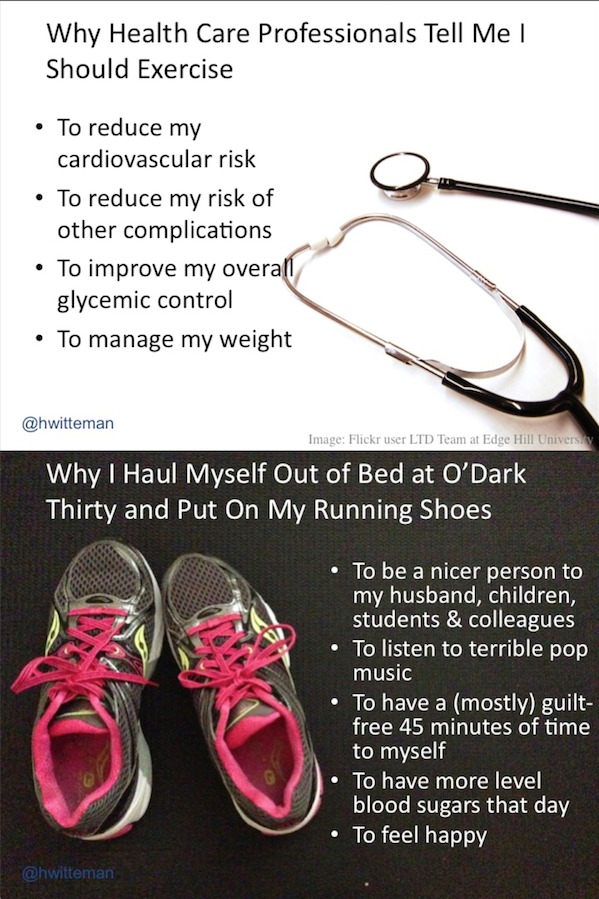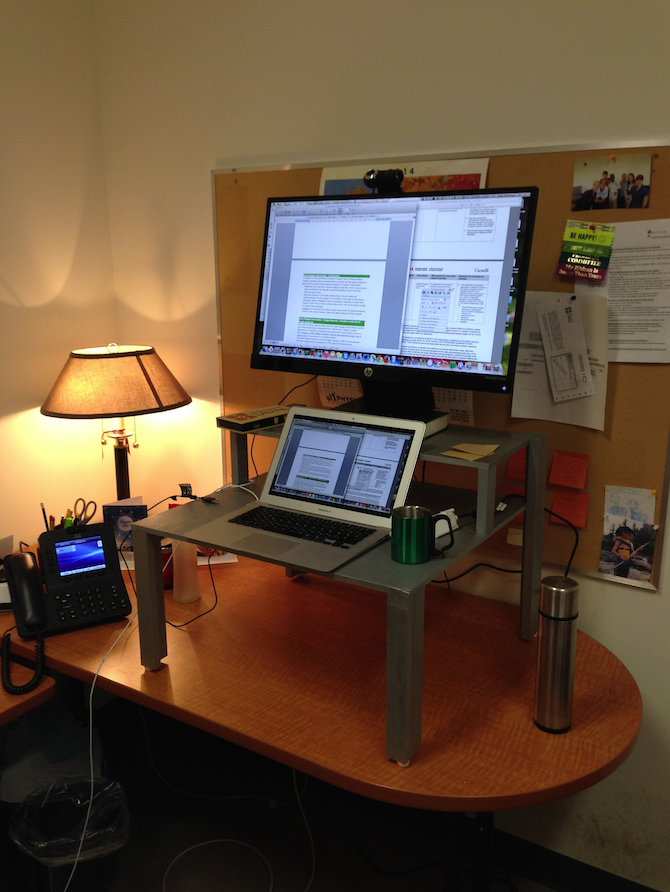~~~~~~~~~
My first week at my new job at a French-speaking university in a city of 95% francophones, I learned a useful new expression: vouloir le beurre, et l’argent du beurre. This translates literally as, ‘to want the butter, and the butter money.’ It’s the equivalent of wanting to have your cake, and eat it, too, but with a more explicit focus on dairy fat. (It is a French expression, after all.)
This idiom is especially useful to me because it succinctly describes what is at the heart of my research: how to help people deal with tradeoffs.
Tradeoffs are inevitable — we see them everywhere in life. My father in law, a general contractor, sometimes tells his clients:
“You can have it good; you can have it fast; you can have it cheap. Pick two.”
When it comes to our health, tradeoffs have implications that go beyond bathroom tiles.
Do I want to have surgery, cut the cancer out, and possibly deal with lower quality of life, or do I want to just keep an eye on it, live with it, and see if it looks like it is becoming a problem?
Do I want the hospital staff to take every life-saving measure possible, even though it means I might suffer longer and spend my last few months connected to machines?
Do I want to wait a little longer with my high-risk pregnancy to see if labor will start spontaneously and increase my chances of a physiologic birth, or do I want to schedule a repeat cesarean for Monday?
Do I want to let my blood sugar run slightly higher this afternoon, adding some incremental long term risk, or do I aim for my usual aggressive targets and risk the mental fog of hypoglycemia during an important meeting?
Aside from being difficult choices, these tradeoffs can be just plain difficult concepts. It’s hard to accept that there is no perfect option, and to wrap one’s brain around the idea that by choosing one path, we lose out on the views along the other.
What makes health tradeoffs especially tough is that they incorporate uncertainty. It’s one thing to choose between the butter and the butter money. It’s quite another to choose between a 15% chance of butter and a 12% chance of butter money. And yet, many medical decisions are set up precisely this way, because we never know for sure whether a treatment or therapy will work, or which people taking a drug will experience the uncommon, unpleasant side effects.
These kinds of decisions are hard enough for people who are fluent in medical jargon. They are that much more difficult for people who struggle with medical concepts and language, or probabilities and other numbers.
So how do we deal with this? I propose three strategies for practice and research.
First, we have to start where people are. I am a human factors engineer, which means that I come at all these issues with an ethic of reality-based design. By that, I mean designing for the way people are, not the way we wish they were. In order to do this, we need to understand how people construct mental models about tradeoffs, and start the conversation from there. (Among other things, as Corey Siegel explained, we need to be aware of the factors that matter to people, like the out of pocket cost of their medications.)
Some researchers, clinicians and administrators already do this, but more emphasis on user-centered design — with techniques like iterative design cycles, rapid prototyping, more real-life observation of what people actually do and less interviewing about what they imagine they might do — could help us come up with approaches that are more responsive to people’s needs. This is especially important for people who face challenges with health literacy or other accessibility issues.
Second, in a classic, time-honored researcher move, I propose more research. This isn’t just because I want job security; rather, it is because we don’t know enough right now about how to best help people facing difficult health decisions to 1) grasp that tradeoffs exist, 2) understand the tradeoffs, 3) clarify their feelings about them and 4) integrate those feelings into their decisions. We do have some reason to believe that making the tradeoffs more clear and obvious can help.
Third, we need to consider our own tradeoffs as researchers and practitioners when talking about health communication and engaging everyone in their own health. The tradeoff for aiming to engage people more and more is that we run the risk of overwhelming people.
Some of us are like e-Patient Dave: we want full access to all of our data, and, indeed, we should have it. But as someone living with chronic autoimmune illnesses and immersed in a never-ending data stream of self-tracking, monitoring, and constant, moment-to-moment tradeoffs, I acknowledge that I don’t always want to be engaged. I already spend plenty of time dealing with my health data, and sometimes, I would rather find a new hike to do with my kids this weekend than upload more data or peruse more graphs.
In short, let’s help people choose between the butter and the butter money in smart ways, and on their terms.


